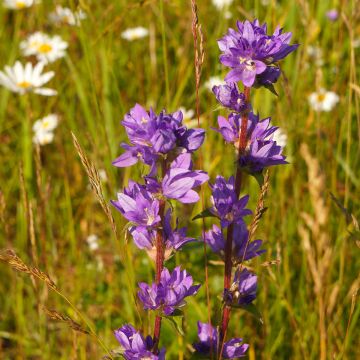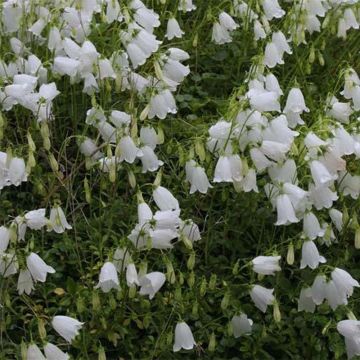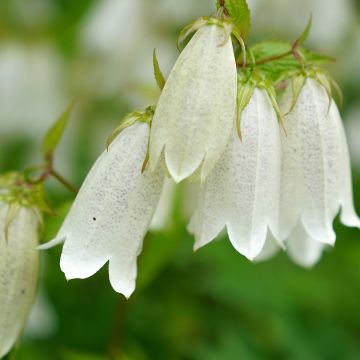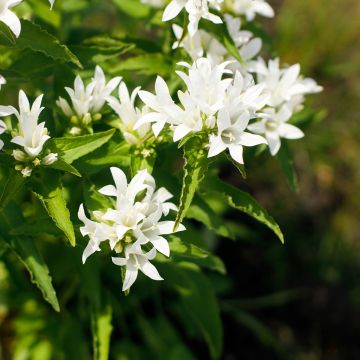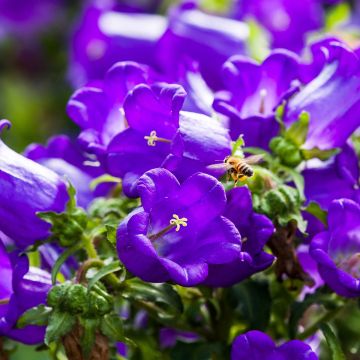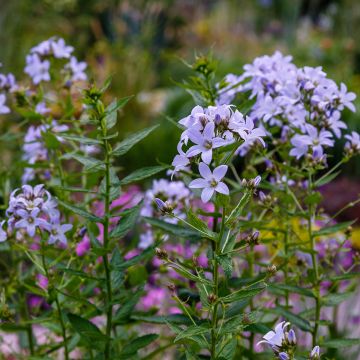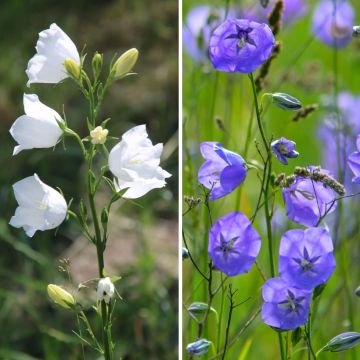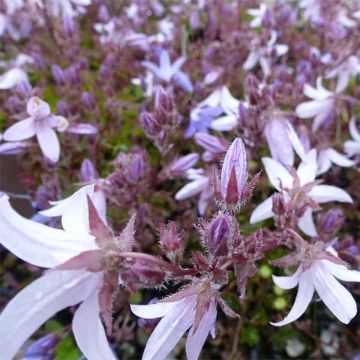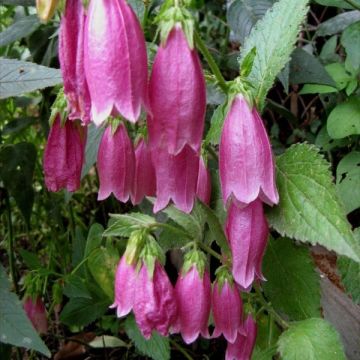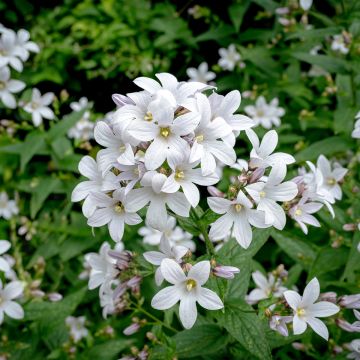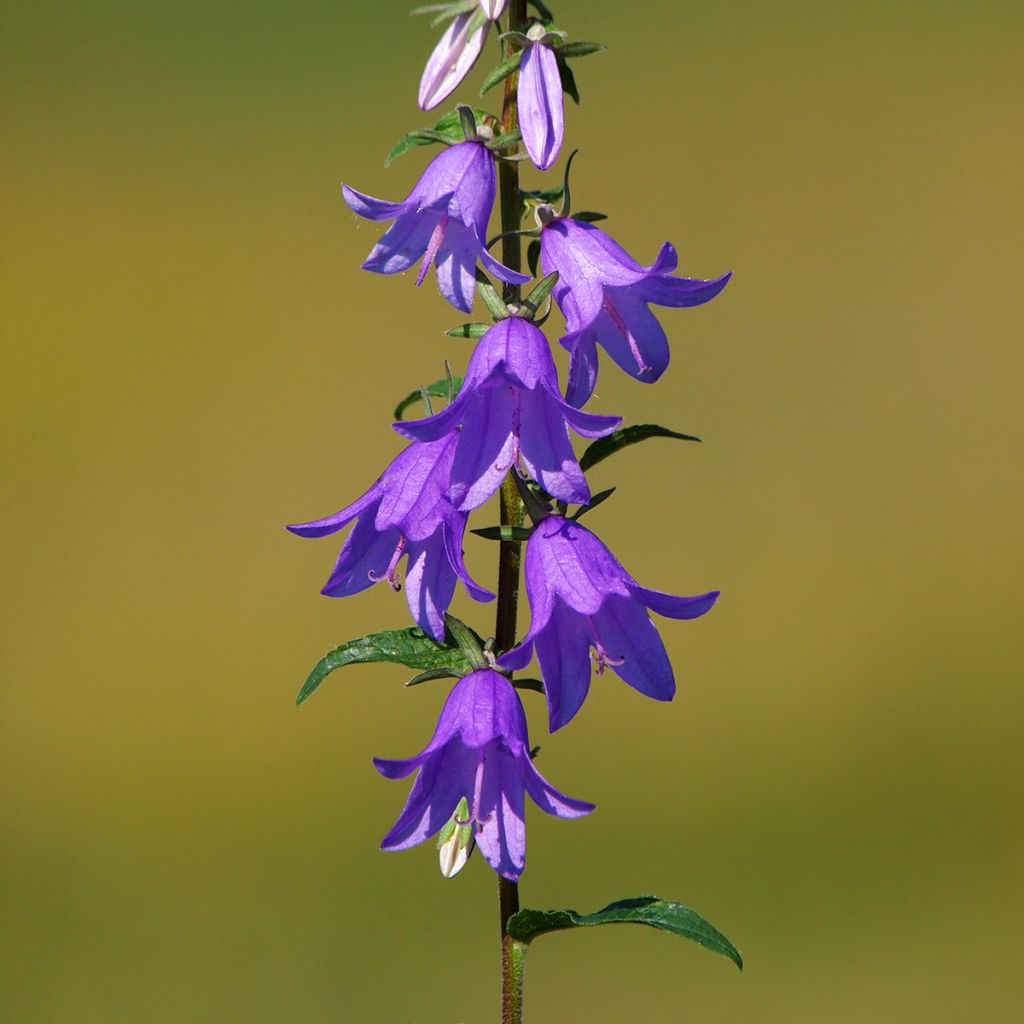

Campanula rapunculoides
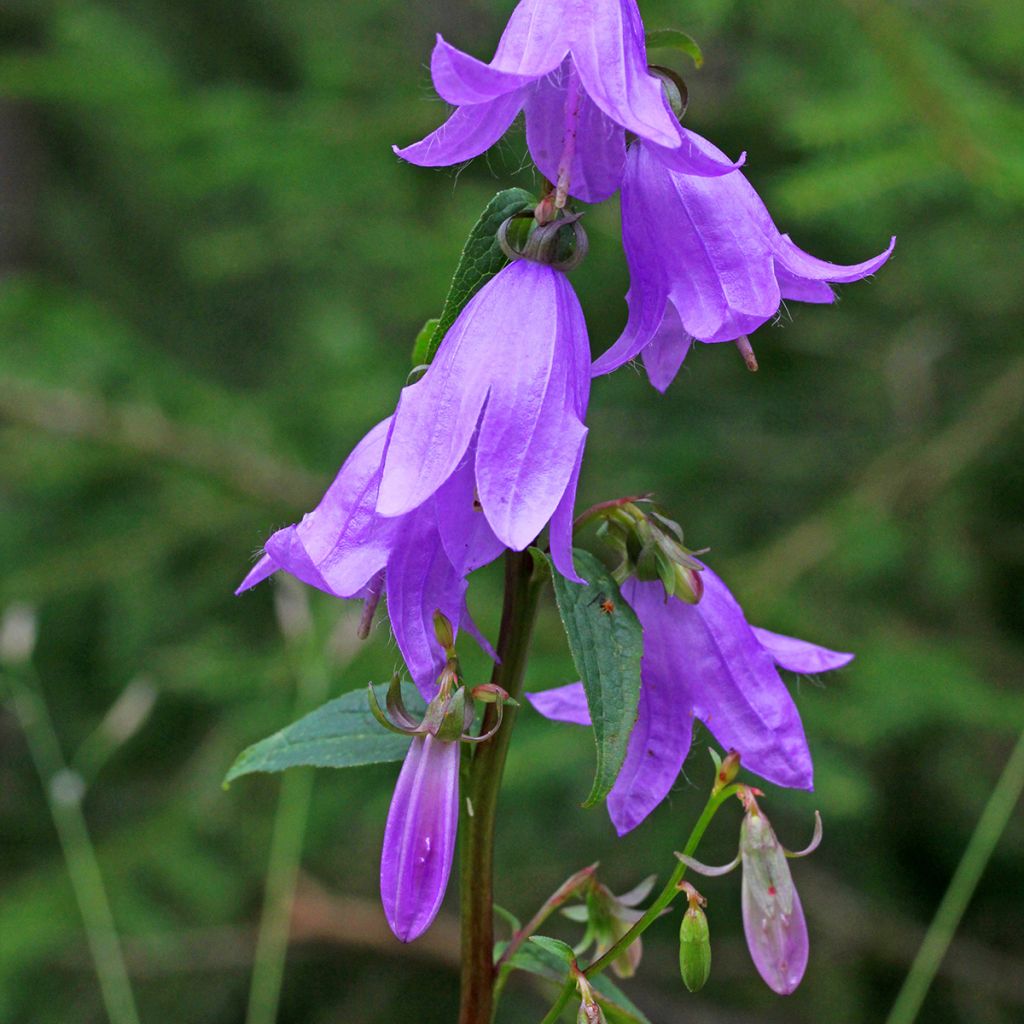

Campanula rapunculoides
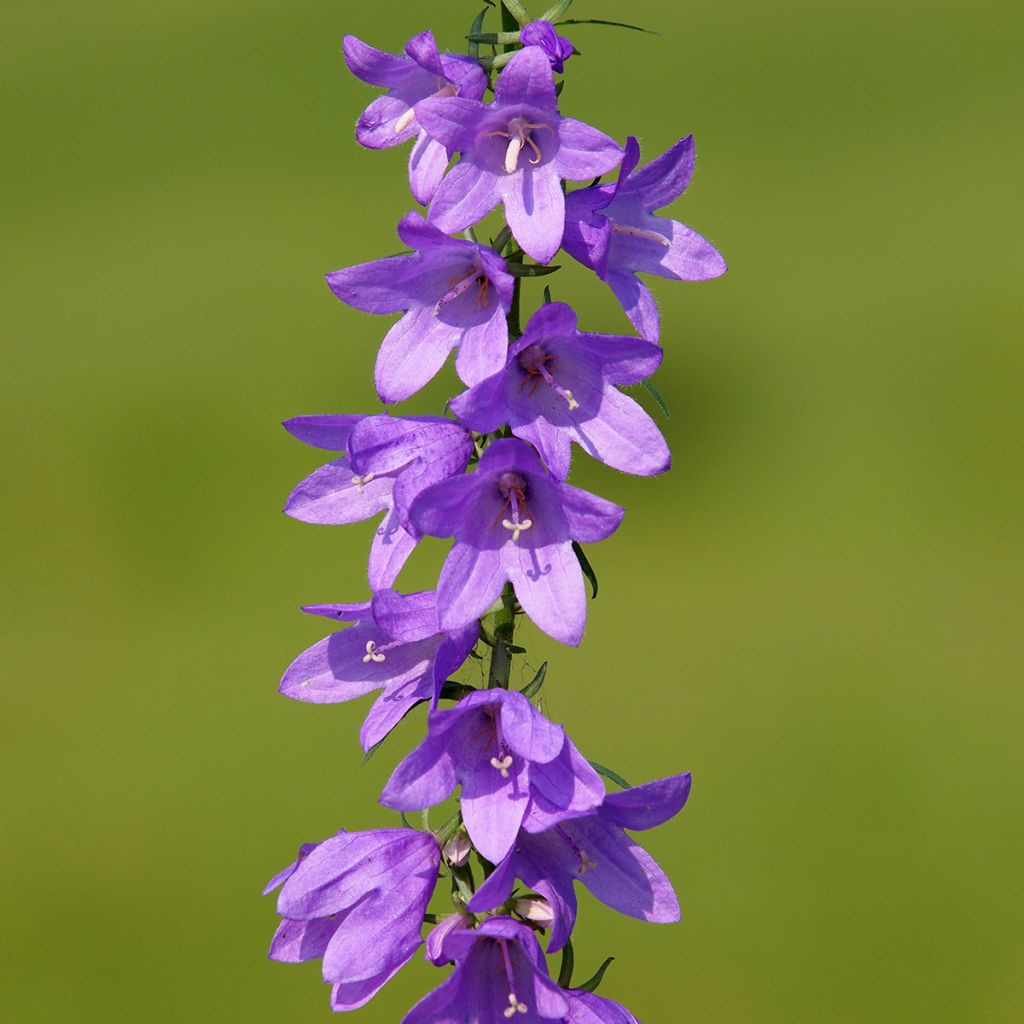

Campanula rapunculoides
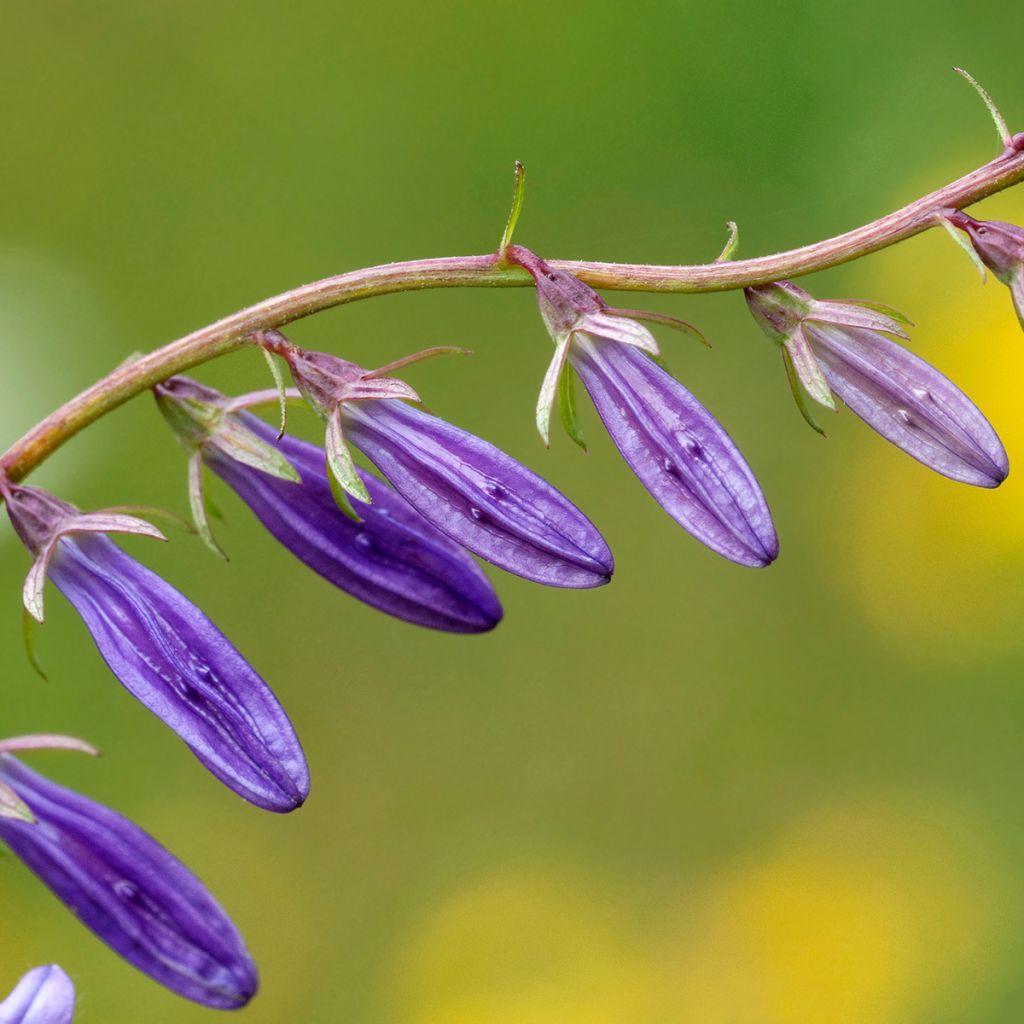

Campanula rapunculoides
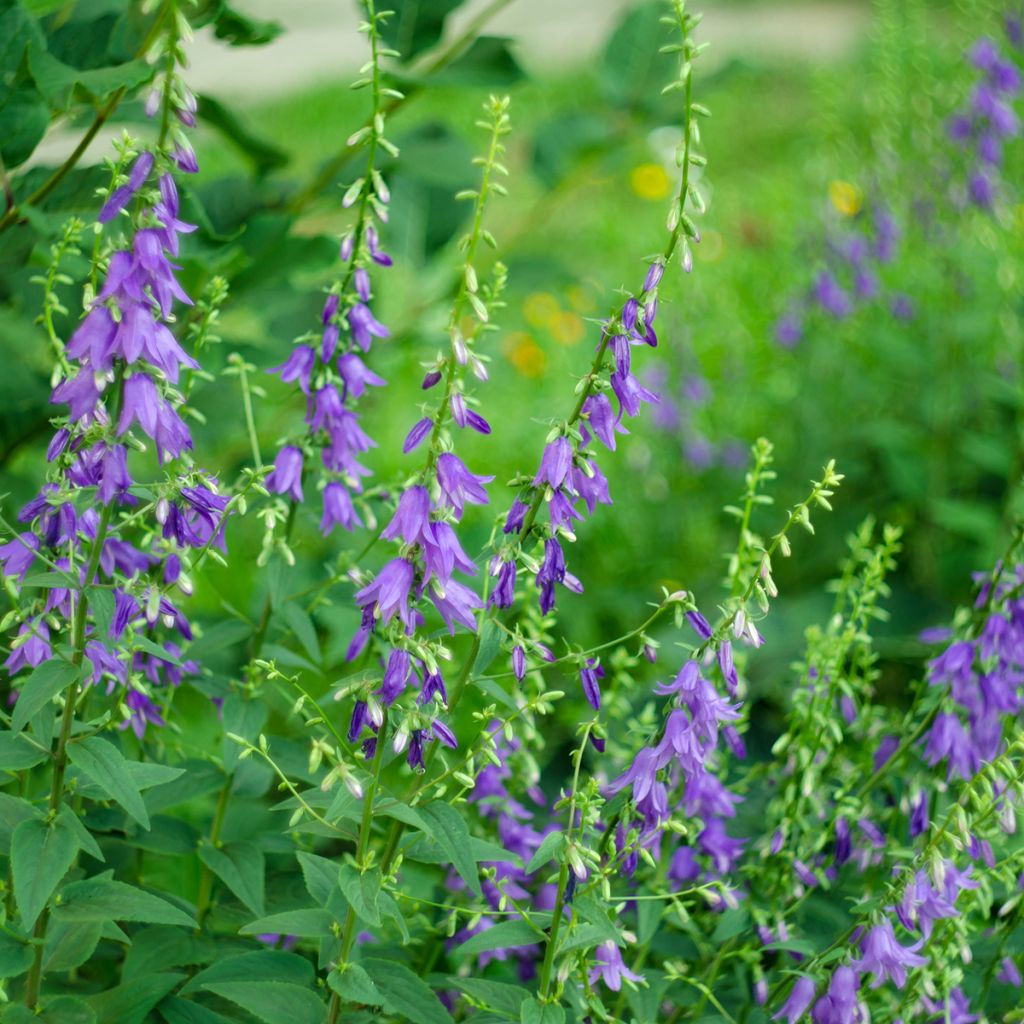

Campanula rapunculoides
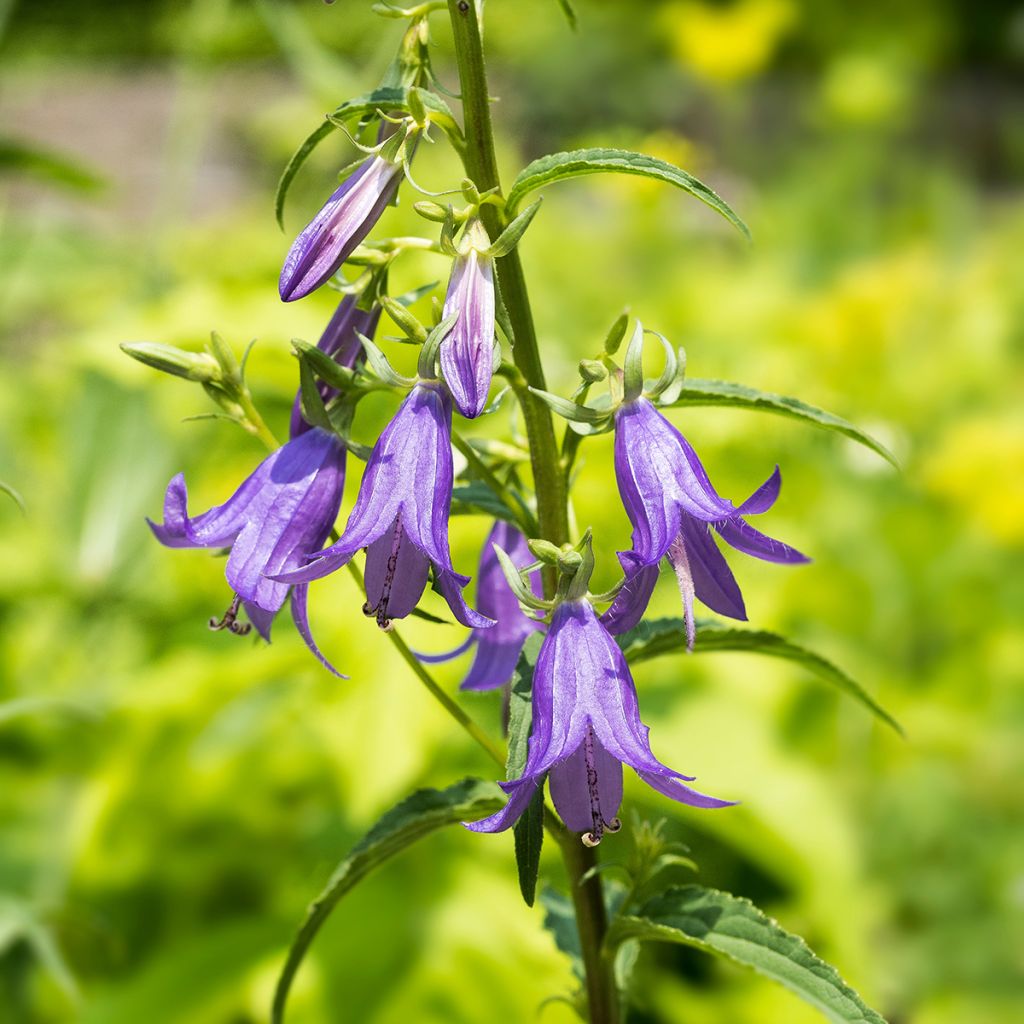

Campanula rapunculoides
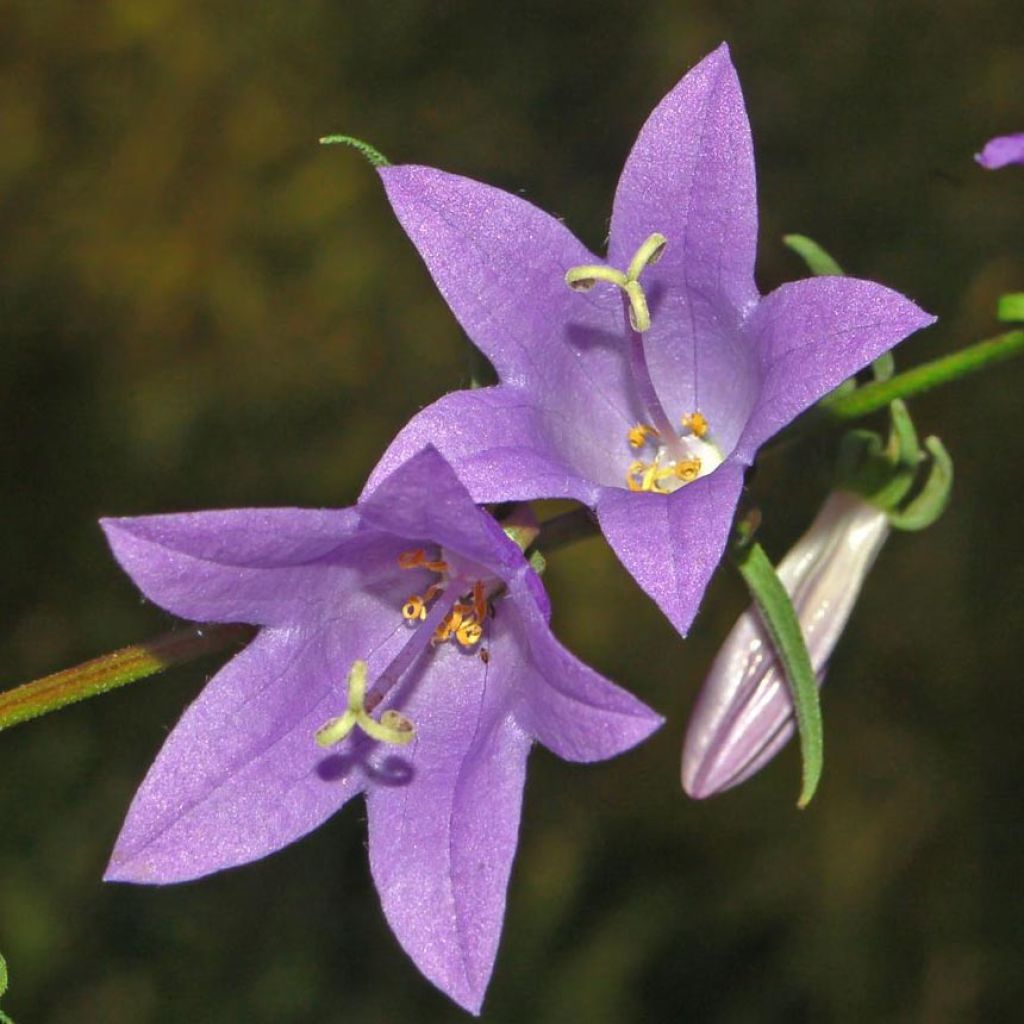

Campanula rapunculoides
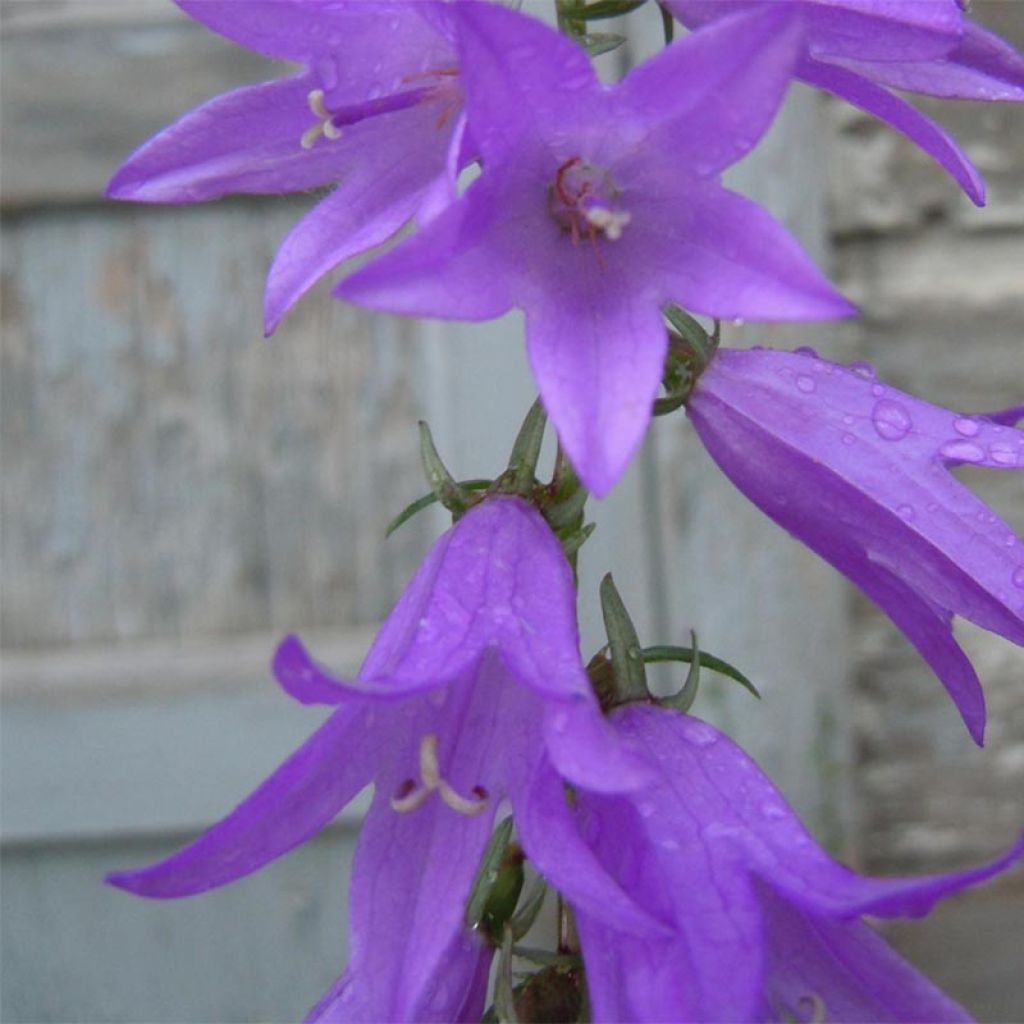

Campanula rapunculoides
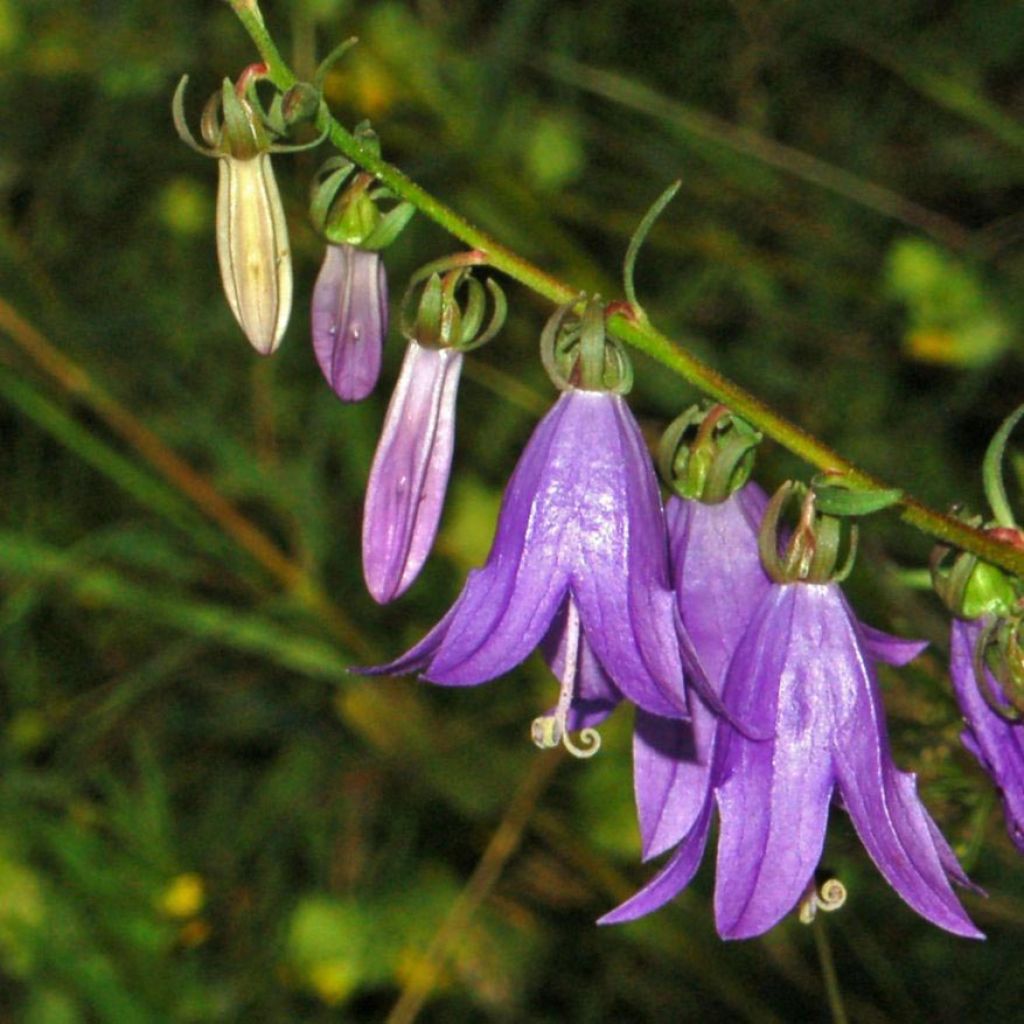

Campanula rapunculoides
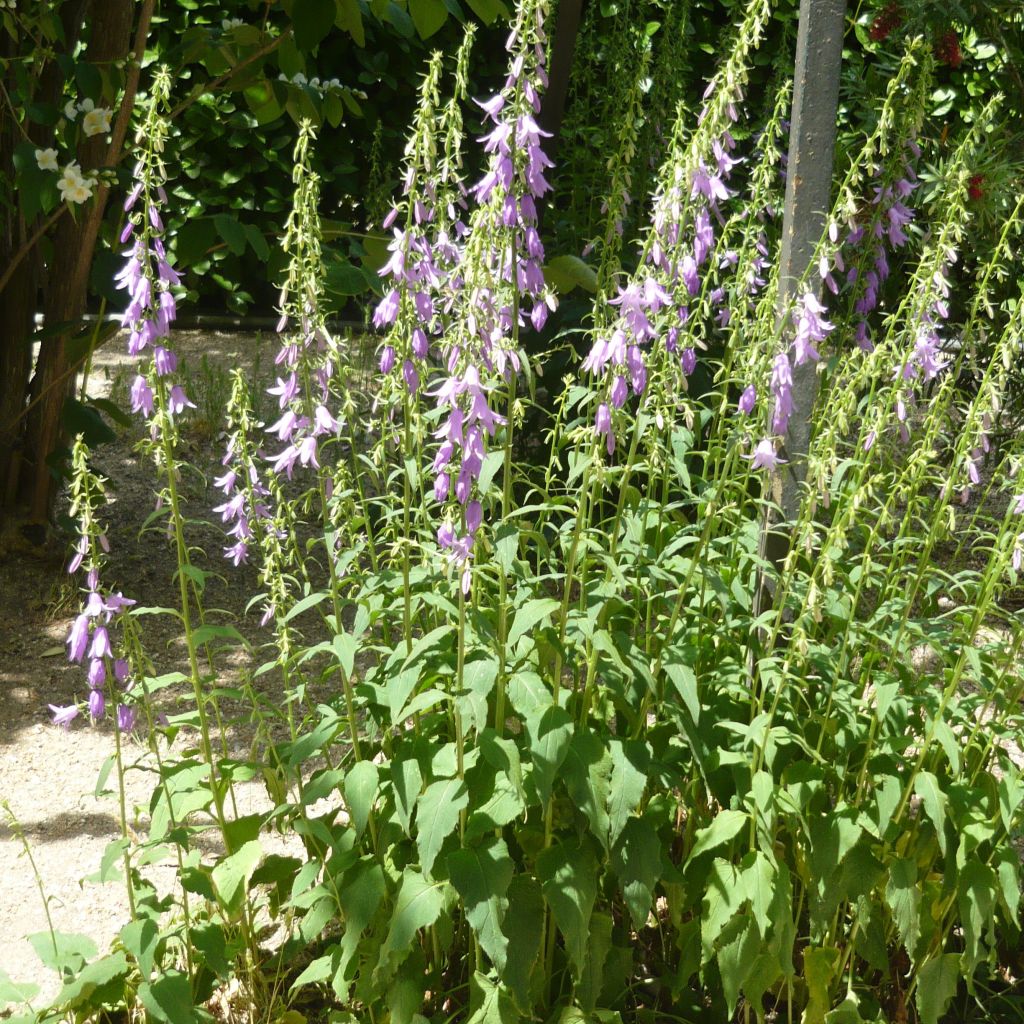

Campanula rapunculoides
Campanula rapunculoides
Campanula rapunculoides
Creeping Bellflower
This item cannot be shipped to the selected country
Delivery charge from €5.90
More information
Schedule delivery date,
and select date in basket
This plant carries a 12 months recovery warranty
More information
We guarantee the quality of our plants for a full growing cycle, and will replace at our expense any plant that fails to recover under normal climatic and planting conditions.
From €5.90 for pickup delivery and €6.90 for home delivery
Express home delivery from €8.90.
Does this plant fit my garden?
Set up your Plantfit profile →
Description
Campanula rapunculoides, also known as creeping bellflower, is a widely spread species in woods and rocky fields. It is a robust perennial with a long summer flowering period. Its gracefully pendulous blue-violet bell-shaped flowers are carried by stems about 80 cm (32in) tall. Undemanding and fully hardy, this plant easily establishes itself in the garden, sometimes proving difficult to eradicate where it thrives. It is an ideal plant for slightly wild areas, as it competes fiercely with weeds and often emerges victorious from this underground battle, crowned with flowers of a true blue.
Campanula rapunculoides belongs to the campanula family. It is native to almost all of Europe, North Africa, and temperate Asia, where it adapts to various habitats: it can be found in meadows, on dry hills, in deciduous and pine forests, fields, and even along roads and railway lines, preferably in partial shade. It tolerates dry or moist, clay soils relatively rich in nitrogen, and climbs mountains up to 2000 metres (6562 feet) above sea level. This perennial plant, which sometimes behaves as a biennial, is a formidable and charming pioneer. A flowering clump reaches a height of 80 cm (32in) to 1 m (3ft), with a spread of 50 cm (20in). This bellflower spreads through creeping rhizomes and nodules that penetrate deeply into the soil. It flowers from June to September, depending on the climate. From a short tuft of basal leaves which are triangular and narrow, with a heart-shaped or rounded base, up to 12 centimetres (5 inches) long, tall flowering stems adorned with pendulous bell-shaped flowers of bright blue-violet, measuring 2 to 4 cm (1 to 2in) long and distributed on the same side of the stem, emerge in summer.
Campanula rapunculoides is a pretty wild species, perfectly adapted to our climates, which contributes to the biodiversity of our gardens. In this respect, it has a rightful place in a natural bed where one does not mind it spreading. It will be perfect in the company of other pretty wildflowers: mulleins, Spanish lavender (Centranthus ruber), wild chicory, sainfoin, purple coneflower, fennel, field scabious, queen of the meadow, hemp-nettle, perennial sweet pea, or lady's mantle. Its simplicity works wonders alongside the roundness of old roses and softens the heavy corollas of deep red peonies.
About bellflowers:
In bellflowers, the crown grows white stolons that spread underground in all directions ensuring the long-term survival of the plant. The numerous upright stems that arise from this crown or stolons can be fertile or sterile. Thus, when one sees a large population of bellflowers, there are often only the clones of a single individual. On the other hand, different species of bellflowers hybridize very easily with each other and are often accompanied by a variety of intermediate forms, which makes them very interesting for horticulturists.
Report an error about the product description
Campanula rapunculoides in pictures


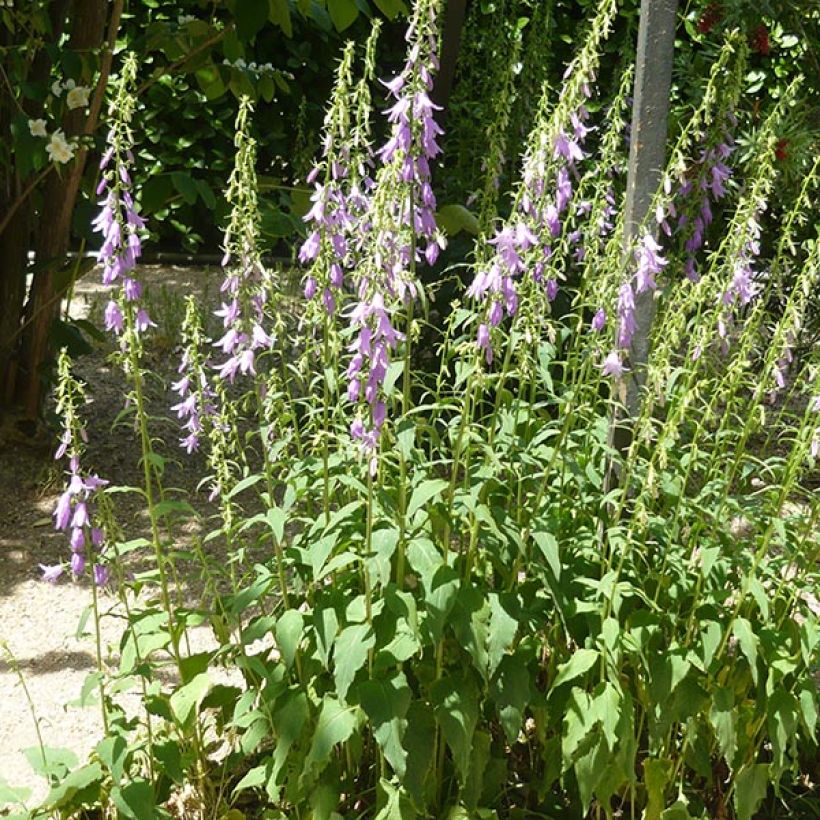

Flowering
Foliage
Plant habit
Botanical data
Campanula
rapunculoides
Campanulaceae
Creeping Bellflower
Central Europe
Other Campanula - Bell Flower
Planting and care
Campanula rapunculoides thrives in any loose ordinary soil and can even grow among rocks. Its only requirement is that the soil remains sufficiently moist during flowering. You can plant it in non-scorching sunlight or preferably in partial shade, sheltered from strong winds that damage the flowers and cause the stems to bend. This perennial is truly easy to grow but does not like overly humid climates or excessively dry summers.
Planting period
Intended location
Care
-
, onOrder confirmed
Reply from on Promesse de fleurs
Haven't found what you were looking for?
Hardiness is the lowest winter temperature a plant can endure without suffering serious damage or even dying. However, hardiness is affected by location (a sheltered area, such as a patio), protection (winter cover) and soil type (hardiness is improved by well-drained soil).

Photo Sharing Terms & Conditions
In order to encourage gardeners to interact and share their experiences, Promesse de fleurs offers various media enabling content to be uploaded onto its Site - in particular via the ‘Photo sharing’ module.
The User agrees to refrain from:
- Posting any content that is illegal, prejudicial, insulting, racist, inciteful to hatred, revisionist, contrary to public decency, that infringes on privacy or on the privacy rights of third parties, in particular the publicity rights of persons and goods, intellectual property rights, or the right to privacy.
- Submitting content on behalf of a third party;
- Impersonate the identity of a third party and/or publish any personal information about a third party;
In general, the User undertakes to refrain from any unethical behaviour.
All Content (in particular text, comments, files, images, photos, videos, creative works, etc.), which may be subject to property or intellectual property rights, image or other private rights, shall remain the property of the User, subject to the limited rights granted by the terms of the licence granted by Promesse de fleurs as stated below. Users are at liberty to publish or not to publish such Content on the Site, notably via the ‘Photo Sharing’ facility, and accept that this Content shall be made public and freely accessible, notably on the Internet.
Users further acknowledge, undertake to have ,and guarantee that they hold all necessary rights and permissions to publish such material on the Site, in particular with regard to the legislation in force pertaining to any privacy, property, intellectual property, image, or contractual rights, or rights of any other nature. By publishing such Content on the Site, Users acknowledge accepting full liability as publishers of the Content within the meaning of the law, and grant Promesse de fleurs, free of charge, an inclusive, worldwide licence for the said Content for the entire duration of its publication, including all reproduction, representation, up/downloading, displaying, performing, transmission, and storage rights.
Users also grant permission for their name to be linked to the Content and accept that this link may not always be made available.
By engaging in posting material, Users consent to their Content becoming automatically accessible on the Internet, in particular on other sites and/or blogs and/or web pages of the Promesse de fleurs site, including in particular social pages and the Promesse de fleurs catalogue.
Users may secure the removal of entrusted content free of charge by issuing a simple request via our contact form.
The flowering period indicated on our website applies to countries and regions located in USDA zone 8 (France, the United Kingdom, Ireland, the Netherlands, etc.)
It will vary according to where you live:
- In zones 9 to 10 (Italy, Spain, Greece, etc.), flowering will occur about 2 to 4 weeks earlier.
- In zones 6 to 7 (Germany, Poland, Slovenia, and lower mountainous regions), flowering will be delayed by 2 to 3 weeks.
- In zone 5 (Central Europe, Scandinavia), blooming will be delayed by 3 to 5 weeks.
In temperate climates, pruning of spring-flowering shrubs (forsythia, spireas, etc.) should be done just after flowering.
Pruning of summer-flowering shrubs (Indian Lilac, Perovskia, etc.) can be done in winter or spring.
In cold regions as well as with frost-sensitive plants, avoid pruning too early when severe frosts may still occur.
The planting period indicated on our website applies to countries and regions located in USDA zone 8 (France, United Kingdom, Ireland, Netherlands).
It will vary according to where you live:
- In Mediterranean zones (Marseille, Madrid, Milan, etc.), autumn and winter are the best planting periods.
- In continental zones (Strasbourg, Munich, Vienna, etc.), delay planting by 2 to 3 weeks in spring and bring it forward by 2 to 4 weeks in autumn.
- In mountainous regions (the Alps, Pyrenees, Carpathians, etc.), it is best to plant in late spring (May-June) or late summer (August-September).
The harvesting period indicated on our website applies to countries and regions in USDA zone 8 (France, England, Ireland, the Netherlands).
In colder areas (Scandinavia, Poland, Austria...) fruit and vegetable harvests are likely to be delayed by 3-4 weeks.
In warmer areas (Italy, Spain, Greece, etc.), harvesting will probably take place earlier, depending on weather conditions.
The sowing periods indicated on our website apply to countries and regions within USDA Zone 8 (France, UK, Ireland, Netherlands).
In colder areas (Scandinavia, Poland, Austria...), delay any outdoor sowing by 3-4 weeks, or sow under glass.
In warmer climes (Italy, Spain, Greece, etc.), bring outdoor sowing forward by a few weeks.

































